| Index > Gulls > Lesser Black-backed Gulls > | < Kleine Mantelmeeuwen < Meeuwen < Index |
2cy Baltic Gull/2kj Baltische Mantelmeeuw
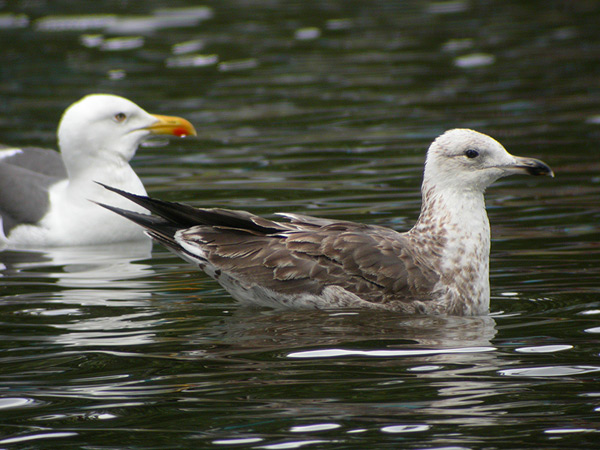
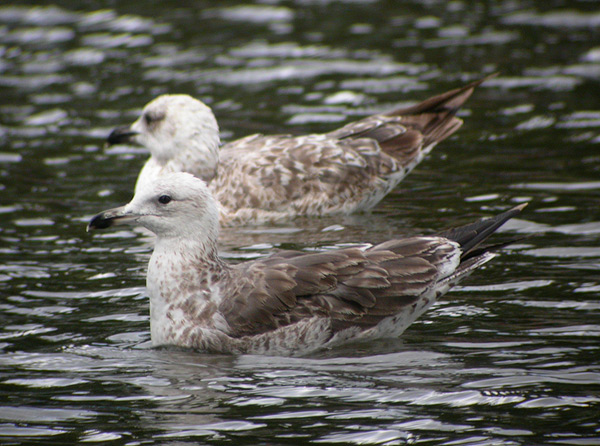
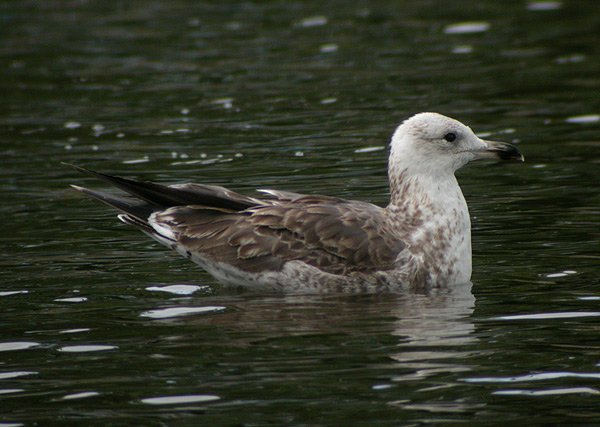
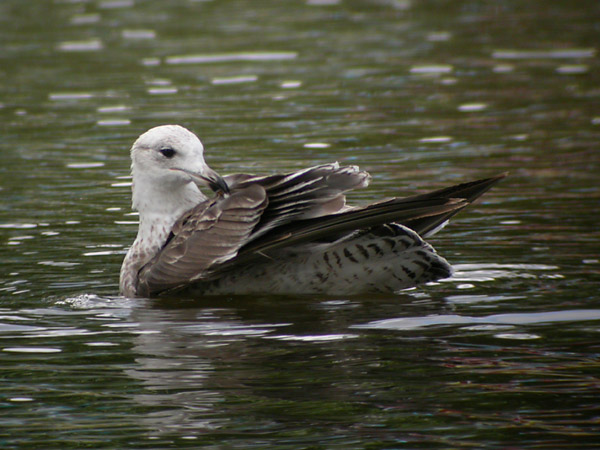
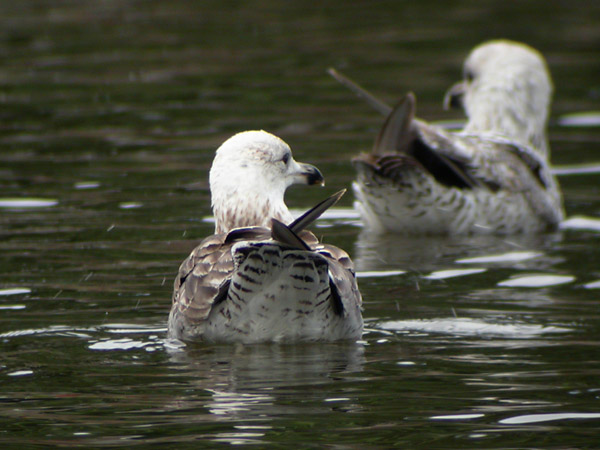
1-5: © Ruud Altenburg, 20-06-04. Erasmusgracht, Amsterdam. A 2cy bird with such an advanced moult pattern should—with the current knowledge—probably be identified as a Baltic Gull L f fuscus. All scapulars, tertials and wing coverts have moulted to second generation feathers. In fact, several scapulars and lesser coverts are already of third generation and there is active moult in the tertials and coverts. These third generation scapulars are rather pale but this is not unusual for 2cy fuscus (see these examples for pale fuscus from Finland). The tail feathers have also been replaced (5), as have the secondaries (4), which show clear white tips in flight. Most important for identification: the primaries have moulted to second generation feathers; only P9-10 are still brownish and therefore juvenile (2, 4). In flight, it appeared that this bird had dropped P1 and thus had started moulting its primaries to third generation feathers. At this time of year, graellsii and intermedius are moulting their juvenile primaries to second generation feathers. Een 2kj vogel met een dergelijk vergevorderd ruipatroon zal waarschijnlijk—met de huidige kennis—als Baltische Mantelmeeuw L f fuscus gedetermineerd worden. Alle schouderveren, tertials en vleugeldekveren zijn geruid naar tweede generatie veren. Verschillende schouderveren en kleine dekveren zijn zelfs al van de derde generatie en er vindt actieve rui plaats in de tertials en dekveren. Deze derde generatie schouderveren zijn aan de lichte kant maar dit is niet ongewoon voor 2kj fuscus (zie deze voorbeelden van lichte fuscus uit Finland). De staartveren zijn ook vervangen (5), net als de armpennen (4), die in vlucht duidelijke lichte toppen hebben. Het belangrijkst voor de determinatie: de handpennen zijn geruid naar tweede generatie veren; alleen P9-10 zijn nog bruin en daarom juveniel (2, 4). In vlucht bleek dat deze vogel P1 kwijt was en dus begonnen was met de rui naar derde generatie handpennen. In deze tijd van het jaar ruien graellsii en intermedius hun juveniele handpennen naar tweede generatie veren.
Also see this dark and very advanced 2cy bird and pictures of comparable 2cy L f fuscus in Finland. Zie ook deze donkere en zeer verre 2kj vogel en foto's van vergelijkbare L f fuscus in Finland.
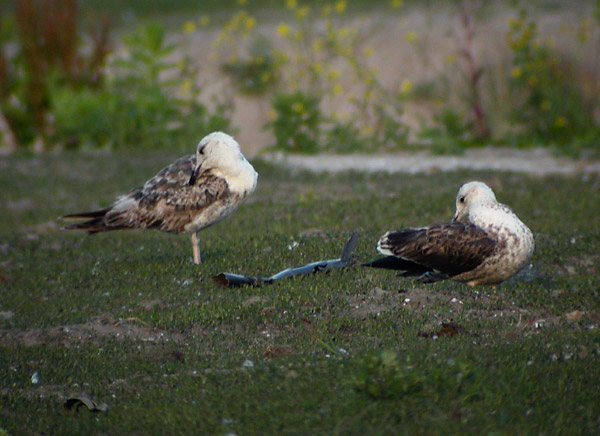
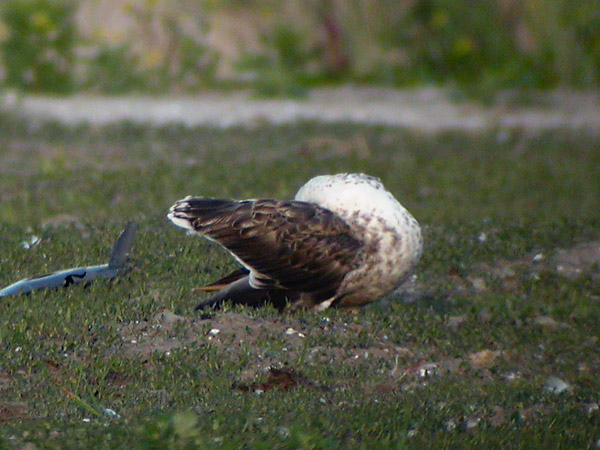
6-7: © Ruud Altenburg, 21-06-04. Sportpark Jan van Galenstraat, Amsterdam. Compare size, basic colour and moult pattern to the 2cy graellsii/intermedius in 7. Unfortunately it's very difficult to judge from 7 if P1 indeed is missing. Vergelijk grootte, basiskleur en ruipatroon met de 2kj graellsii/intermedius in 7. Helaas is het zeer lastig te beoordelen in 7 of P1 inderdaad ontbreekt.


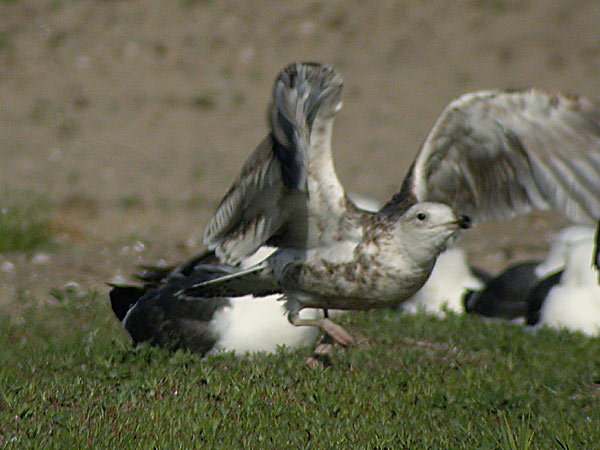
8-9: © Ruud Altenburg, 30-06-04; 10: © Ruud Altenburg, 01-07-04. Sportpark Jan van Galenstraat, Amsterdam. After not having been seen for over a week, this bird returned to the same location, in the meantime having dropped P9. Notice the 'step' between the secondaries and primaries in the left wing in 11, indicating that P1 is missing. This means the bird is simultaneously moulting the inner (to third generation) and outer (to second generation) primaries ("Staffelmauser"). This would be a very unlikely moult pattern for graellsii or intermedius. Na een meer dan een week niet gezien te zijn lijkt keerde de vogel terug naar de oude plek. In de tussentijd heeft de vogel P9 heeft laten vallen. Zie de 'trede' tussen de arm- en handpennen in de linkervleugel in 11, een indicatie dat P1 ontbreekt. Dit betekent dat de vogel tegelijkertijd de binnenste (naar derde generatie) en buitenste (naar tweede generatie) handpennen geruid ("Staffelmauser"). Dit zou een zeer onwaarschijnlijk ruipatroon zijn voor graellsii of intermedius.
| Back | Terug |